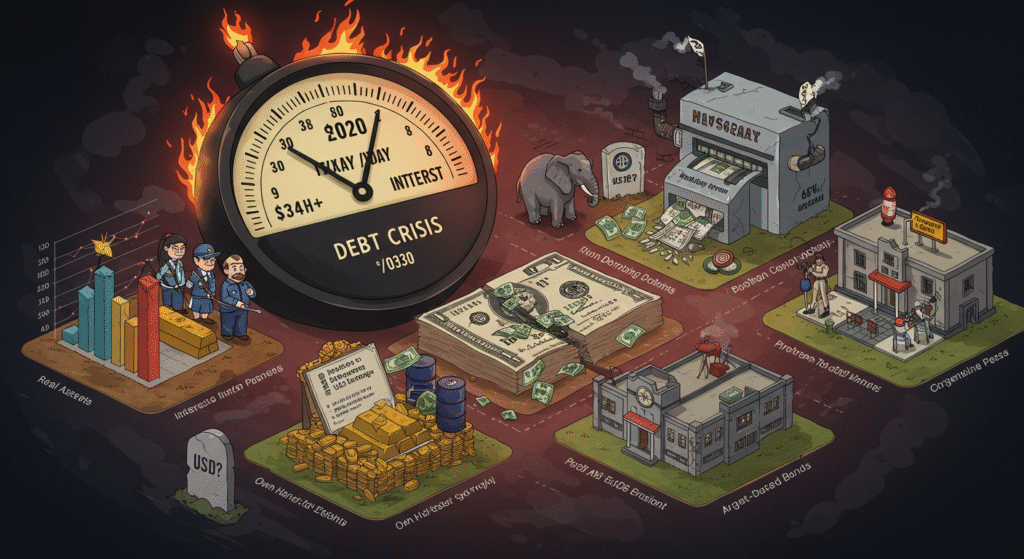For investors, recognizing the stability in the market is often the key to finding profitable opportunities. And one thing is certain: the U.S. government’s consistent spending is a reliable factor in this stability.
Many hoped for fiscal restraint, but Washington’s latest budget proposal—dubbed the “Big Beautiful Bill”—just cleared the House and is headed to the Senate. If passed, it will add $3.8 trillion to the national debt over the next decade.
Whether this is wise policy is debatable, but as investors, our focus is clear: there are still numerous ways to profit from it.
The Debt Reality: Why It Doesn’t Matter (Until It Does)
This isn’t a partisan issue. Every administration in recent history—Republican or Democrat—has expanded the national debt. Promises of fiscal responsibility rarely materialize because politicians thrive on spending.
But here’s the critical insight: The debt itself isn’t the problem—it’s the interest payments.
From 2008 to 2022, the national debt tripled, yet interest costs remained stable. That’s because near-zero interest rates kept servicing costs low.
Now, with rates higher, the U.S. government spends $3 billion per day just on interest, more than its defense budget. By 2030, a third of tax revenue could go toward debt payments.
The Investor’s Edge: Positioning for Debasement
When debt becomes unsustainable, governments have one escape valve: printing more money. This devalues the currency, a process Wall Street refers to as “debasement.”
The U.S. dollar has already lost 66% of its purchasing power since 1984. Understanding this historical trend can guide our future investment decisions, as this trend is likely to continue.

So, how do you protect—and grow—your wealth?
1. Stocks: The Classic Inflation Hedge
Stocks have historically outpaced inflation because companies can raise prices and increase earnings. This means that stocks act as an ‘inflation hedge’, a term used to describe an investment that maintains or increases its value when prices rise. Businesses in disruptive sectors—such as AI, biotech, and energy—offer even greater upside.
2. Gold: The Timeless Store of Value
Gold, with its surge of 25% this year, is on track for its best performance since 2010. It’s a reliable hedge, preserving wealth in times of economic uncertainty. While it may not multiply wealth, its steadfastness provides a sense of security and reassurance in your investment portfolio.
Since 2009, gold has barely kept pace with the growth in the money supply. It’s insurance, not an engine for wealth creation.
3. Crypto: The Ultimate Debasement Hedge
While gold holds value, crypto compounds it. Bitcoin (BTC) has been the best-performing asset of the past decade, crushing gold’s returns by 99.99% since 2012. Ethereum (ETH) and Solana (SOL) are strong contenders, but the real excitement lies in high-growth altcoins that can deliver returns of 10X or more in bull markets, making crypto an intriguing and potentially high-return investment opportunity.
The Winning Strategy
- Stocks (50-70% of portfolio) – Focus on high-growth sectors.
- Gold (5-10%) – A safety net against extreme volatility.
- Crypto (20-30%) – Bitcoin and Ethereum as core holdings, with smaller allocations to high-upside altcoins.

Share this content:



